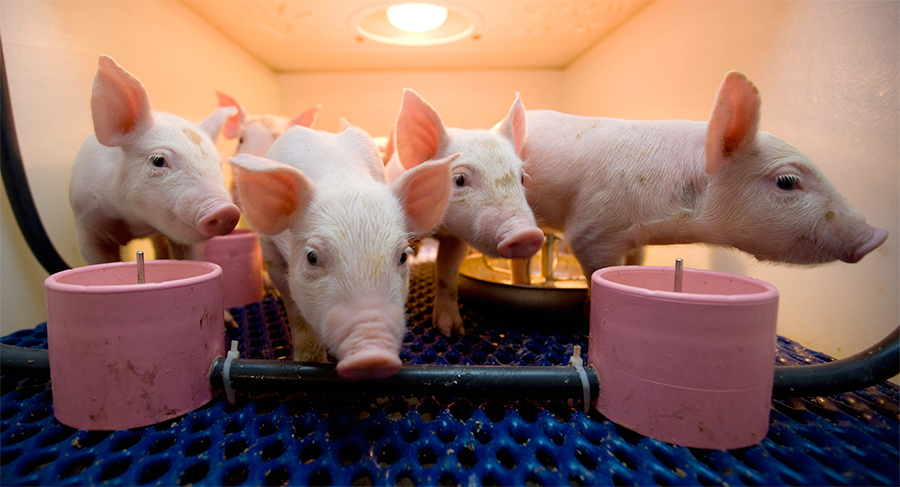
After a brief recovery through June, pig prices have fallen again and are now over 30 pence a kilo, or 20 per cent, below where they were this time last year.
The price differential between NI and the rest of the UK is now back over 12 pence a kilo. As is happening elsewhere in the EU, weekly slaughtering numbers are up, and are now 6.5 per cent ahead of the same week in 2014.
Average finished pig prices are currently around 120.7 p/kg, representing a 30.6 p/kg difference from the same week in 2014.
Weekly slaughterings in mid-July were 32,576 pigs a week, down 1.3 per cent on the previous week, but still well above the 30,600 at the same time last year.
Across the UK, pig meat production has continued to grow, with the national June output up 68,500 tonnes or six per cent year-on-year.
This means production has now risen for 22 consecutive months and it is the fifth month in a row with production increasing by at least five per cent.
These high supplies, coupled with the Russian import ban and a slow down in the Chinese economy, have continued to put pressure on prices at a time when local consumer demand remains weak.
A further problem is the eight-year low of the euro against sterling which is allowing retailers to import cheaper product from elsewhere in the EU, undercutting high quality, home grown, Red Tractor assured pork.
This combination of factors explains why EU pig prices have fallen so sharply over the last 12 months and why they have remained stubbornly low for so long.
However, there is an old adage amongst traders that “the cure for low prices is low prices” and we may be beginning to see that happening. June brought the first UK increase in monthly sow slaughterings in over a year. At over 19,000, these rose 7.3 per cent year-on-year.
While this may be just a case of sow culling returning to normal levels following a period of low throughput, it could also be the first evidence of producers destocking to limit their losses and mirrors reports from other EU countries, such as Germany and Ireland, that have seen sow slaughterings rise by 5.8 and 12 per cent respectively.
While this is cold comfort for local pig farmers in the short term, especially those facing cash flow problems and being forced to cut sow numbers, it may be the first signs of the market beginning to rebalance supply and demand. This should allow prices to recover in the longer term.
However, the challenge for farmers will be to weather the tough financial times ahead until stability returns. If that is to happen, producers need the support of local consumers and processors through the downturn, so that they can remain in business until the better times arrive.
